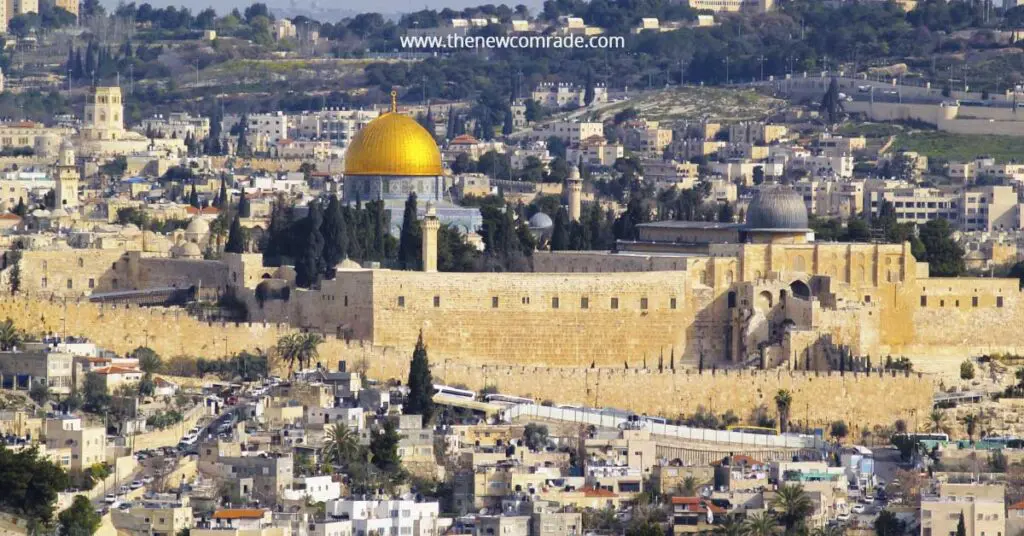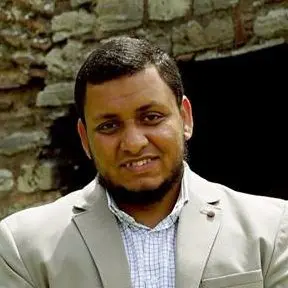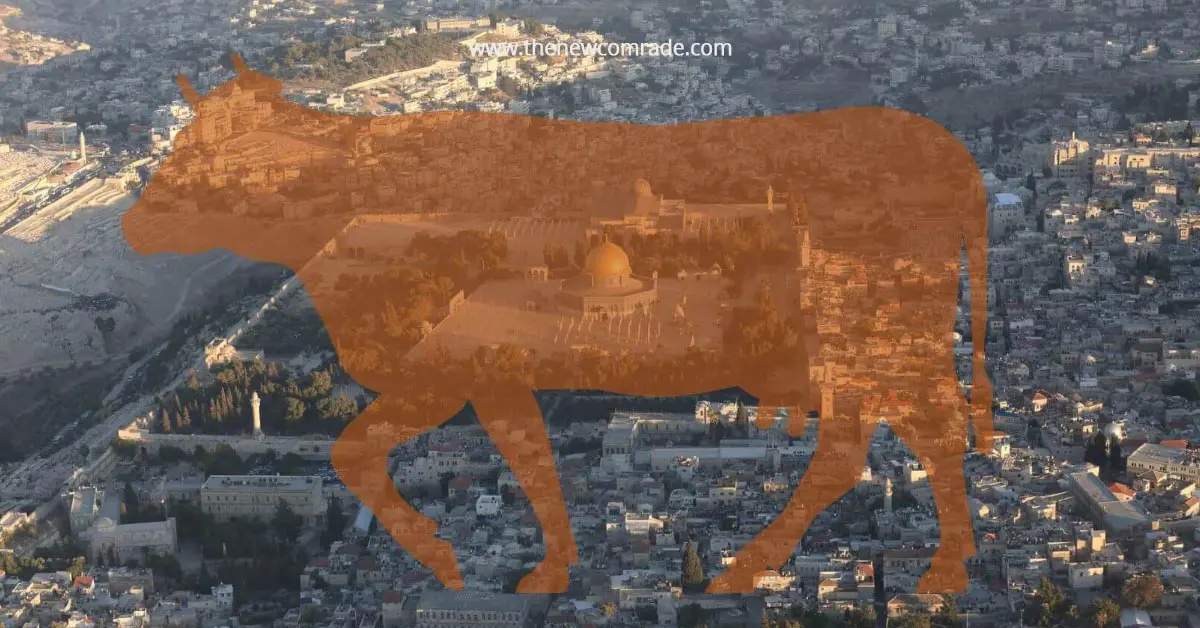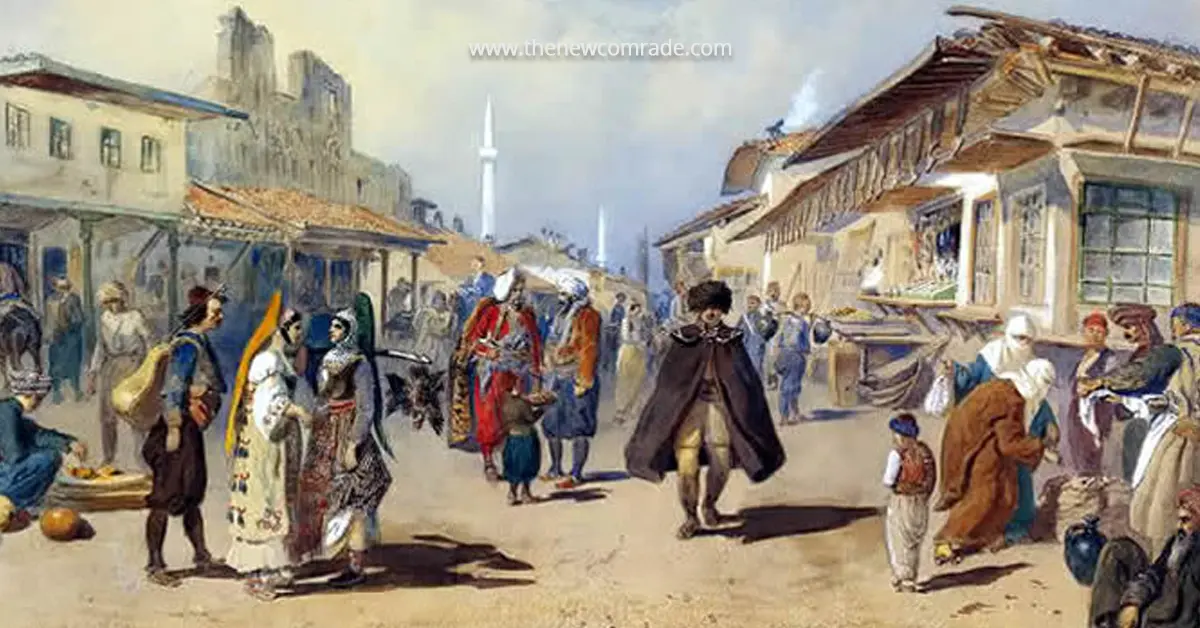It is possible to summarise Muslim history of Bayt al-Maqdis to six key stages:
- Conquest – during the reign of Umar ibn al Khattab (RA), soon after the advent of Islam in the second decade of the first century Hijri, specifically, Rabi’ II 16 AH.
- Crusader occupation – in the last decade of fifth century Hijri, specifically, 492 AH.
- Liberation from Crusaders, after 90 years of the occupation, at the hands of Salahuddin al-Ayubi, at the end of the sixth century Hijri, specifically, Rajab 583 AH.
- Another loss at the hands of of the later Ayubids, viz. Kamil, nephew of Salahuddin, and Dawud, nephew of Kamil. This happened in the first half of seventh century Hijri, more precisely, from 624 to 641 AH.
- Another recovery at the hands of Najmuddin Ayubi, in alliance with the Khawarizmis, one year after its loss – more precisely, in the year 642 AH.
- Seven centuries later, another loss in the modern era at the hands of the British occupation forces, in 1917 CE (1366 AH) and then the Zionist invasion of East Jerusalem (thereby, Bayt al-Maqdis) in 1967 CE (1387 AH).
Currently, Muslims are waiting for the seventh stage, that of liberation from Zionist occupation. We beseech Allah to hasten it and also that we be part of the army of this liberation.
A striking thing is that, Bayt al-Maqdis appears like a jewel in the crown, or like the heart protected beneath the ribs. It is not possible to reach it nor conquer it without passing through the surrounding important capital cities. This means that control over Bayt al-Maqdis (Jerusalem) is the fruit of dominance over the capital centres that hold sway over Bayt al-Maqdis.
First Stage- Conquest
Muslim conquest of Levant involved five army divisions – all directed to Damascus. The purpose of this division was to scatter the enormous Byzantine army and to divide it, likewise, to five parts. Byzantine army was ten times the Muslim army in strength. Abu Bakr (RA), by dispatching five armies tried to lure Heraclius, the Byzantine Caesar, into sending five opposing armies, such that the overwhelming numerical superiority of the Roman army could be broken. But, Heraclius discerned this plan and so he sent a division of his army to oppose the army of ‘Amr ibn al-‘As in the south of Palestine and stationed the remaining part of his army as a single bloc. This army did not intend to reclaim the areas conquered by Muslims. Rather, they planned to encircle the whole Muslim army – which was penetrating towards the south. This was a dangerous matter that compelled the Muslims to abandon whatever they have conquered and return to the south so that they would not be besieged and isolated. Hence, during the conquest of Levant, there were many instances of territories being conquered by the Muslims multiple times, in the process of which, they had to return jizya collected from the people therein. It also happened repeatedly that some of the conquered lands revolted against Muslims thinking that the Muslim retreat was due to their military weakness.
What concerns us here is that, the capital of Levant – Damascus was conquered two years before the conquest of Bayt al-Maqdis. The conquest of Damascus happened on Sunday, 15th of Rajab 14 AH (September 5, 635 CE), while the conquest of Bayt al-Maqdis was on 16th of Rabi’ II 16 AH (May, 637 CE).
After the Muslims conquered Damascus, they were forced to withdraw from it lest the Byzantines besiege them. Then they fought the major battle with the main Byzantine army, at Yarmuk. That was a year after the conquest of Damascus (Rajab 15 AH). When Allah granted them this great victory, the road to Bayt al-Maqdis was thrown wide open. It was conquered nine months after the battle of Yarmuk.
Had the Companions of the Prophet (RA) been a group of dervishes, their eagerness to conquer Bayt al-Maqdis would have been greater than their keenness to conquer Damascus, for Bayt al-Maqdis is the first Qibla, the place of the night journey (Isra) of Prophet and the place where he prayed with other prophets (AS). However, they were people endowed with reason, wisdom, political acumen, and defence strategic thinking. They knew well that the path to Jerusalem should pass through Damascus.
Second Stage – Liberation
In Salahuddin’s liberation of Bayt al-Maqdis, we could notice similar course of action (Sunnah) pursued in a steadfast manner. Imad ad-Din Zengi was reinstated and he was able to carve out for himself an emirate in the region of Mosul and then in Aleppo. It was from this place that the battle against the Crusaders for liberating Bayt al-Maqdis began. Imad al-Din Zengi was able to defeat one of the Crusader principalities, i.e. principality of al-Raha (Edessa). He could not do more than that, due to the simple reason that Damascus was before him. He was assassinated before achieving it. Succeeding him, his son Nur ad-Din was able to fulfill this wish and seize control of Damascus through an operation similar to a popular revolution and a soft coup, in 549 AH. This happened thirty-four years prior to the liberation of Bayt al Maqdis.
Then a raging battle flared up between Muslims, lead by Nur ad-Din, and Crusaders for control of Cairo. Egypt was, then, richest and most prosperous among all Muslim lands. It was under the rule of the ‘Obeydis (Fatimids). It was quite clear that whoever took Egypt had the final say. Many decisive issues were resolved through the dominance of Nur ad-Din over Egypt in 564 AH, i.e., nineteen years before the liberation of Jerusalem. In Cairo, Nur ad-Din’s deputy, Asad ad-Din Shirkoh, and after him, Salahuddin were able to put an end to the ‘Obeydi state and unify Egypt and the Levant (567 AH), that is, sixteen years before the liberation of Jerusalem.
Upon demise of Nur ad-Din, many events threatened to relapse Levant again to a state of fragmentation. At that time, Egypt recompensed gracefully to Levant, with Salahuddin setting off to restore its threatened unity. He became the leader of Levant and liberated Damascus from the corrupt rulers who had once again sunk back to alliances with the Crusaders (570 AH). This was thirteen years before the liberation of Jerusalem. After this, the question of Jerusalem turned out to be just a matter of time. This was realised in Rajab 583 AH, at the hands of the Sultan of Egypt and Levant – Salahuddin Al-Ayubi.
The liberation of Jerusalem would not have been possible without liberating the capitals of Egypt and Levant, i.e., Cairo and Damascus, and also it would not have been possible for the Liberation Army to set out; given that the rulers in Levant had control over its cities, resources, and men, made covenants and agreements with the Crusaders, swallowed wealth of those lands and its people, and were enlisting people in the service of their interests and even in the service of Crusaders.
Salahuddin Al-Ayubi dedicated twenty years of his life, in the path of liberation of Jerusalem. Three-quarters of this long period was spent in liberating Muslim lands from corrupt rulers and collaborators of Crusaders in Egypt and Levant. He set foot in Egypt as part of his uncle Asad ad-Din’s army (564 AH) and spent five years improving its condition and sent reinforcements to Cyrenaica, Lower Maghreb, and Yemen as well. Then came the death of Nur ad-Din in 569 AH, which put to peril whatever had been achieved, because of the rulers of Levant. Those quislings had established their ties with the Crusaders, released their prisoners and started paying tributes to them. So, Salahuddin rose from Egypt for the reunification of Levant. He was engrossed in this matter for eleven years until 580 AH. After this, it took only three years, further, for him to conquer Bayt al-Maqdis. Thereafter, he spent rest of his life fighting the third Crusade until he repelled it away. May Allah have mercy on him.
In the next article, God willing, I will present the history of loss of Jerusalem during the Crusades, and during the contemporary Western occupation, so that we perceive the natural law which sets Jerusalem like a jewel in the crown or like the place of heart relative to the ribs, only to be arrived at through the entry points of the surrounding Arab capitals.
Translated by- Thafasal Ijyas











